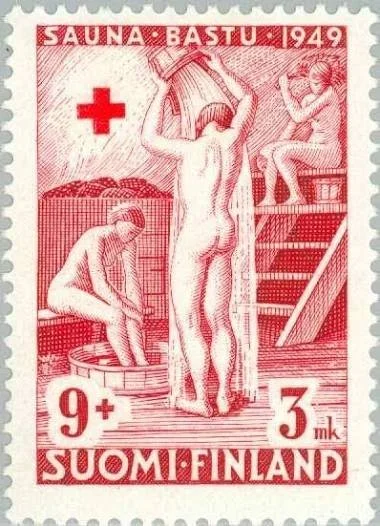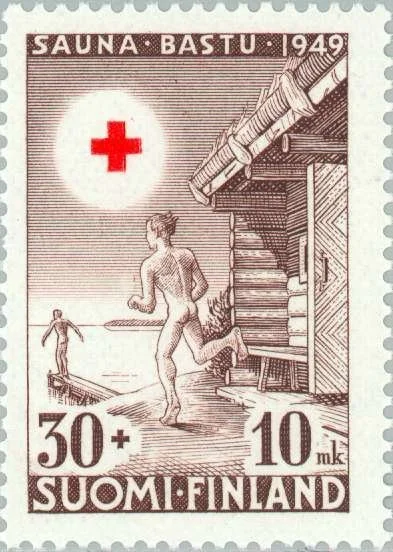Stamps tell stories
Some friends recently gifted me these fun sauna stamps, issued in 1949 in Finland. After doing a little research I found out that the stamps were sold to raise money for the Finnish Red Cross, specifically for tuberculosis relief efforts.
Four sauna scenes are depicted including 1) binding bunches of birch branches, or vihta, 2) heating up a sauna, 3) girls in sauna, and 4) diving into lake after the sauna. The stamps were quite risqué for the times, with two of the four showing (gasp!) nudity. The stamps are based on paintings by Finnish artists, such as Väinö Hämäläinen.
These stamps are not incredibly rare and can be purchased pretty readily on eBay and other sites, but they reminded me of the story-telling power of stamps. Each one is a tiny, beautiful piece of art. Of course, stamps are postage and serve a purpose, but I think, like so many things we see and use every day, we overlook their true value.
A little history:
The Penny Black, issued in 1840 in Great Britain, was the world's first adhesive postage stamp, and a second stamp, the Twopenny Blue, was issued shortly after.
The first general issue U.S. postage stamps were released on July 1, 1847, with designs featuring Benjamin Franklin and George Washington.
The invention of perforations in the 1850s made stamps easier to use.
The first self-adhesive stamps were issued by Tonga in 1963 and Sierra Leone in 1964. The United States did not fully implement the technology until 1992.
Postage stamps depicting art, politicians, events, scientists, inventors, famous citizens, and geography have become chronicles of the history of countries. What a wonderful thing. I can understand why people collect stamps.




